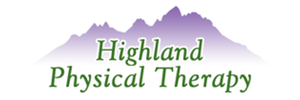​
Winter’s cold embrace can turn joyful activities like cooking for family, traveling, and sitting for long dinners into painful ordeal.
Understanding why back pain intensifies during this season is crucial, not only for comfort but for enjoying precious moments with loved ones to the fullest.
Do you keep asking “why does (my) back pain increase in winter?”…
We’re here for you.
In this blog, you will explore the key reasons why back pain increases in winter, and 5 tips for relief.
Let’s get into it…
Back pain is a complex issue that can stem from various causes.It might be a sign of an underlying condition, a consequence of lifestyle choices, or a response to environmental changes.
From strained muscles due to poor posture to more serious issues such as degenerative disc disease, the origins of back pain can be as varied as their symptoms.
Why Does Back Pain Increase In Winter? The Key Reasons...
Reduced Physical Activity
During winter, the drop in temperature often leads to reduced physical activity.
People tend to stay indoors more, leading to a sedentary lifestyle.
This decrease in activity results in less blood flow throughout the body, causing muscles, especially those in the back, to become stiffer and less flexible.
The lack of movement can stiffen the spinal joints, exacerbating discomfort and pain in the back.
Relief Tip:
To counteract this, it’s essential to incorporate light, indoor physical activities into your daily routine.
This could include yoga, which gently stretches and strengthens the back muscles, or Pilates, known for improving core strength and spinal alignment.
Even simple daily activities like indoor walking, stretching exercises, or using a stationary bike can keep the back muscles active and supple.
Aim for at least 30 minutes of moderate activity most days of the week.
Cold Weather and Muscle Tension
Cold weather naturally causes the muscles to contract as the body tries to conserve heat and maintain a stable internal temperature.
This muscle contraction, particularly in the back, leads to increased tension and stiffness.
Prolonged exposure to cold can exacerbate chronic back conditions and increase the sensitivity to pain.
Relief Tip:
Consistent warmth is key.
Dress in layers to keep the back muscles warm when outdoors.
Indoors, consider using a heating pad or a warm compress on the back for 15-20 minutes to relax the muscles.
Warm baths with Epsom salts can also provide relief by combining heat with muscle-relaxing magnesium.
Barometric Pressure Changes
Some individuals are sensitive to changes in barometric pressure, commonly experienced during winter weather fluctuations.
These changes can cause expansion and contraction in body tissues and muscles, leading to increased back pain.
People with certain types of arthritis or chronic back conditions may notice their symptoms worsening with weather changes.
Relief Tip:
Creating a stable, warm indoor environment can help mitigate these effects.
Using a humidifier can also maintain a consistent level of humidity in your home, which can be beneficial.
Gentle indoor exercise can also help keep the muscles and joints loose, reducing the impact of pressure changes.
Holiday Stress
The holiday season, despite its joy, can be a period of increased stress, which can exacerbate back pain.
Stress can cause muscles to tense up, particularly in the back, leading to pain and stiffness.
Additionally, emotional stress can heighten the perception of physical pain.
Relief Tip:
Implementing stress-reduction techniques is vital.
Deep breathing exercises can help calm the mind and reduce muscle tension.
Yoga and mindfulness meditation are also effective in managing stress.
Allocating time for relaxation and self-care during the busy holiday season can also help in reducing stress levels.
Seasonal Activities
Winter activities like shoveling snow, standing for long periods while cooking or even holiday shopping can strain the back.
These activities often involve movements or postures that put additional pressure on the back, leading to pain and discomfort.
Relief Tip:
Practicing proper body mechanics is crucial.
When shoveling snow, use an ergonomic shovel, bend your knees, and lift with your legs instead of your back.
During prolonged cooking or standing, use a cushioned mat and take regular breaks to sit down and stretch.
While shopping, be mindful of carrying evenly distributed loads to avoid straining one side of your body.
Each of these factors plays a significant role in the experience of back pain during the colder months.
By understanding and addressing these aspects with specific strategies, you can help maintain a healthy back throughout the winter season.
Recover From Back Injuries Fast With Highland Physical Therapy
We recognize that each person’s path to healing and wellness is as individual as they are.
That’s why, at Highland Physical Therapy, we are excited to offer FREEÂ Specialized Back Pain Assessments back pain assessments.
These FREE Back Pain Assessments are pivotal in uncovering the unique factors contributing to your discomfort, allowing us to craft a treatment plan that’s as unique as your needs.
This no-cost assessment could be the transformative step you’ve been searching for on your journey to recovery and better health.
And if coming to our clinic isn’t an option for you right now, don’t worry – we’re just a phone call away with FREE Telephone Consultations) (We genuinely love speaking with you all!).
Connect with Highland Physical Therapy today – because you deserve the best care!
Additional Free Resources For Back Pain Increase In Winter
Read Our Blog-Â Preventing Injuries While Putting Away Christmas Decorations
Read Our Blog – How To Sleep With Lower Back Pain
Follow Us On Social Media – Highland Physical Therapy Facebook and Highland PT Instagram

